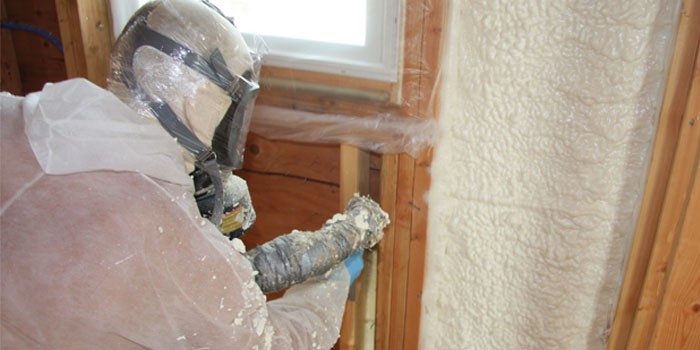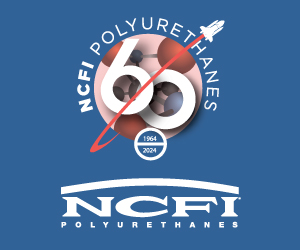Where are the Skilled Laborers?


JUPITER, FL – February 1, 2019 – When I talk with clients and associates, consistently the biggest challenge facing the SPF industry is labor concerns; more specifically business owners, managers and manufacturers hiring skilled-labor. With construction employment at its high since 2008, many construction trades, including many of my clients, friends, and associates in spray foam insulation, are having difficult times finding good personnel and are concerned about a labor shortage. In my opinion, there are a couple of key reasons why our labor force is shrinking and there are a few key actions that we, as spray foam industry professionals, can take now to turn these trends around and build a better, stronger, successful spray foam labor force.
Shrinking, Aging Skilled-Labor Force
Let’s start with why the skilled-labor force is getting smaller. There are three key reasons to look at:
- Older workers retiring, getting promoted or aging out of labor-intensive work
- Youth not focusing on trades
- Decline in immigration
Older Workers Moving On
One of the biggest factors in a potential labor shortage is that older workers are, or will soon be, moving on in several ways, some are retiring, some of them are getting promoted out of the field and others are just getting to a point that they say, “I’m too old for this sh*t.” Lots of construction jobs, like spray foam installers, take a toll on your body and squeezing your way through crawl spaces and attics is uncomfortable and physically demanding. As these workers move on, lots of positions will open up and hiring managers will have trouble filling these voids.
Youth Pointed in Other Directions
Our economy has always had older workers moving on, but in the past younger workers were there to fill the jobs. However, for several generations now, the focused message to our youth has been, “Go to college, get a degree” because a college-education has almost become a prerequisite for many companies today.
Combine this with the fact that vocational, career and technical education in high schools has been on the decline for several decades and it means that young adults have little to no exposure to construction trades or other technical education, so they don’t even think about it as a potential career. When was the last time you heard a millennial say, “I want to work in the construction industry”?
Immigration Policy
Finally, look around your local construction sites. I’d be willing to bet that immigrants make up a large portion of the workforce, especially in southern states like California, Arizona, New Mexico, Texas, and Florida. When immigration declines, as it has in recent years, there are fewer people available to fill these employment voids.
When we take the analysis further, economics tells us that when supply goes down, cost goes up, which means if we as an industry continue down this path, our labor costs will increase; which means installed prices to our customers will also increase.
What Can We Do To Minimize This Labor Cost Increase?
Business owners, manufacturers and building professionals can start acting now to combat the looming labor shortage. You can take three key actions to help protect yourself and the industry:
- Document your processes and procedures
- Implement a training and education program
- Recruit new talent
First, your company should document all the processes and procedures for every part of the business. This means reviewing all six parts of your business (marketing, sales, operations, administration, management, and the owners) identifying the critical business functions that must be completed in each part of the business, and creating written processes and procedures to document how to complete each of the critical business functions. I know, this probably seems like a daunting task, but when you are done, the combination of these written processes and procedures becomes a manual for your business. When someone new joins your operations team, the operations manual becomes a critical part of their onboarding and training process to get them started on the right track, learning the way you do business.
Second, while your business manual will be a key part of your onboarding process, your company should also implement a training program for your new hires and a continuing education program for the rest of your team. Your new hire training program could include a series of training options to get them up to speed and then they would feed into your continuing education program. Your overall training program should offer job and skills training, business and management education, and personal development. Job and skills training focuses on improving specific knowledge and skills that individuals on your team need to do their job better. Business and management education helps your supervisors and managers develop their skills and helps elevate other personnel to the management level. And personal development offers guidance, coaching and wisdom on how to get better for everyone on the path to personal and business success.
Finally, constantly recruit new talent. Leaders and managers in any business should constantly be looking to improve their talent, upgrade their team and advance their more talented staff, to do this you need to add people to your team on a regular basis. When you hire younger workers, they offer more service years and overtime they can develop and grow into higher level positions—this is why you need employee training and development programs. Also, if you have ever tried to hire someone in the spray foam industry, I am sure you have noticed that not a lot of people have SPF experience, so you must be open to hiring people without SPF experience, and being able to onboard and train these newbies makes this a little smoother. My last tip on hiring people is to hire people with good integrity, high character, and transferable skills.
Business leaders are responsible for making all of the people around them better and if you take these critical steps to build a foundation for your business you can easily onboard new hires, train anyone and build strong teams. If all business owners, manufacturers and building professionals start adopting these tactics, our labor pool will grow and help us minimize potential labor cost increases. •
Direct any questions you have about statements made in this article to Robert Naini: 817-983-3544 | robert@sprayfoamadvisor.com
About the Author Robert Naini has a Bachelor’s of Science in Mechanical Engineering and an MBA from the University of Texas in Arlington. With more than a decade of experience on the cutting edge of spray foam insulation, he has helped hundreds of owners and managers grow their business with a unique knowledge base including spray foam sales and marketing, employee and applicator training, building science awareness and building code expertise. Spray Foam Advisor offers web-based training and education, with videos, articles, blogs and more, to help solve problems for spray foam professionals and the construction industry.
*Spray Foam Magazine does not take editorial positions on particular issues; individual contributions to the magazine express the opinions of discrete authors unless explicitly labeled or otherwise stated. The inclusion of a particular piece in the magazine does not mean that individual staff members or editors concur with the editorial positions represented therein.
Disqus website name not provided.







































